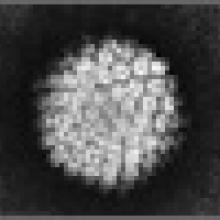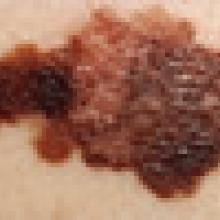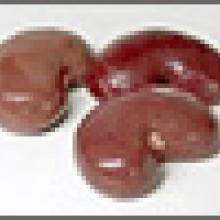Newsroom
9/20/2011
Working with faculty and staff from the Winship Cancer Institute of Emory University and Emory Healthcare, CancerQuest has produced a new educational video for patients with peripherally inserted cental catheters (PICC), also called central lines or just IV catheters. the video contains detailed… more
9/19/2011
For the first time ever, a intravenous injection of a virus has been shown to be able to target and kill cancer cells. The trial used a modified vaccinia virus (JX-5694), a type of virus used to make vaccines. Importantly, the virus was able to move through the body and specifically attack cancer… more
9/19/2011
Researchers at the Univesity of Missouri have developed a way to detect lung cancer that relies on finding single copies of an RNA produced by lung cancers, and found in the blood of the patients. The method uses tiny nano-particles containing tiny pores through which the RNA (and can move. When… more
9/2/2011
Researchers have developed a molecular 'logic circuit' to identify and kill cancer cells. The researchers first identified a group of RNA molecules that are found at very high or very low levels in HeLa cancer cells (marker RNAs). They then constructed genetic tools that can measure the levels of… more
9/1/2011
One of the reasons that chemotherapy and radiation can fail to kill of the cells in a tumor is because the middle of tumors often have decreased levels of oxygen. Oxygen helps the treatments to do their jobs. To overcome this barrier, researchers have developed tiny oxygen generators that can be… more
8/24/2011
Researchers from the American Cancer Society looked at people who had (or had not) followed guidelines to reduce their risk of developing cancer as part of the Cancer Prevention Study II Nutrition Cohort. They found that following the guidelines reduced the risk of death, but not just from… more
8/24/2011
Two recent studies have shown the smokers who light up right after waking up are more likely to develop lung or head/neck cancer. The increased risk seems to be related to the fact that these smokers are more addicted to nicotine and inhale the smoke more deeply, increasing their exposure to… more
8/19/2011
Smoking has been shown to increase the risk of many forms of cancer in both men and women. A new study looking at a very large group of men and women in the AARP-NIH Diet and Health Study group has found that about 50% of bladder cancers in women are linked to smoking. This result is higher than… more
8/19/2011
The FDA approved vemurafenib (ZELBORAF®), for the treatment of advanced melanoma. The drug can only be used to treat patients whose cancers have mutations in the BRAF gene. For those patients, vemurafenib has been shown be more effective than existing treatments. The drug is given as a pill.
8/19/2011
The evidence is rapidly accumulating that dogs can smell some forms of cancer. In a recent study, dogs were trained to identify lung cancer by smelling exhaled breath samples from patients. They were able to identify 71% of the lung cancer samples and were not confused by samples from patients… more
8/15/2011
DNA repair is important for the prevention of cancer. Recently, a gene that makes a DNA repair protein, RAD51D, was shown to be important in the prevention of ovarian cancer. A comparison of people from families with a history breast/ovarian cancer with those without a history showed that women… more
8/10/2011
A review of 30 trials suggests that either music therapy and other types of music treatments reduce anxiety in cancer patients. Positive effects were also seen on quality of life, blood pressure and heart rate. The results are very preliminary and the authors suggest that more information (and… more
8/9/2011
A study of over 90,000 deaths in New Zealand has found a link between growing up/working around livestock and development of blood cancers. The linkage was strongest amongst those who grew up near poultry. In this population the risk was three times higher. The cause is unknown but may be… more
8/8/2011
A study of over one million U.K. women showed that taller women are more likely to get cancer. The researchers examined seventeen different cancer types and found that cancer risk was increased in 15 and statistically increased in 10 of the cancer types examined. The reasons for the increase are… more
8/8/2011
The prostate specific antigen (PSA) test for prostate cancer is not perfect, and many men with elevated levels of PSA in their blood undergo prostate biopsies that turn out to be not needed. A new, non-invasive, test has been shown to work well with PSA testing to detect the presence of prostate… more
8/8/2011
All of our cells rely in sugar for energy. Cancer cells just need more sugar than normal cells. This is because many cancers only use some of the available energy making processes, so they get less energy per sugar molecule.
Using kidney cancer as a model, researchers have identified a target… more
7/8/2011
Nitrate and nitrite salt consumption causes cancer in animals. Because these chemcials are found at high levels in cured meats such as ham, bacon, and hot dogs, their role in human cancer is of great interest. Pancreatic cancer was the focus of this investigation.
Research presented in the… more
7/8/2011
In a clinical trial, a large group of post-menopausal women were given vitamin D and calcium supplements and followed to determine the effects of the treatment on the development of skin cancer. The results showed that for women at high risk of developing cancer, (those who had previously had a… more
7/7/2011
A study published in the Journal of Urology examined the relationship between the presence of arsenic in urine and kidney cancer (renal cell carcinoma), the most common form of cancer of the kidneys. Their conclusion was that the level of arsenic present in urine is strongly related to the… more
7/7/2011
The Cancer Genome Atlas Research Network has successfully analyzed the genetic changes that occur in advance serous adenocarcinoma, the most common form of ovarian cancer. The researchers examined the activity and structure of the genes in 489 different cases of advanced ovarian cancer. This… more



















